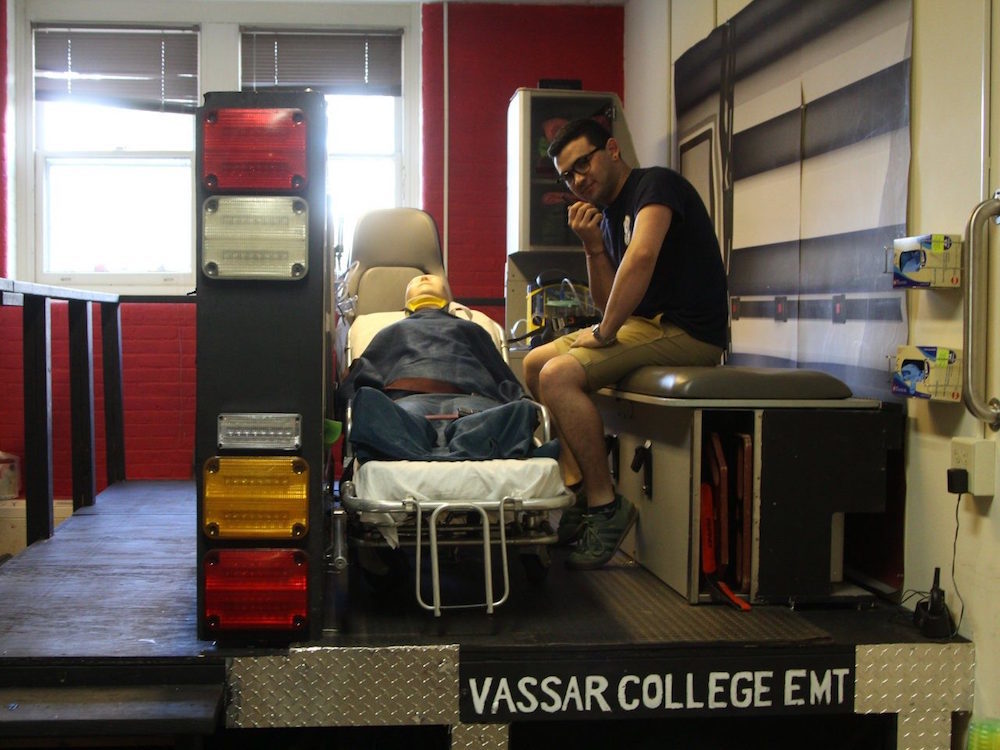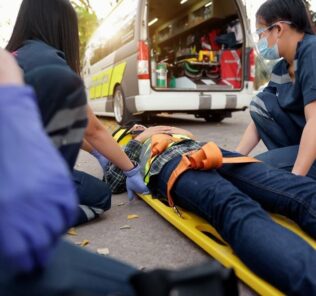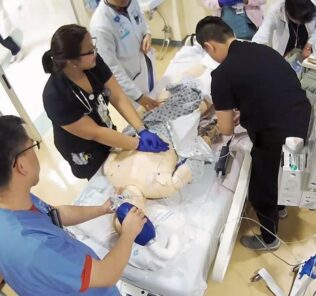JEMS Details How Vassar College Built Their Own Ambulance Simulator
Ambulance Simulation for EMS students is an important aspect of training that may be difficult to reproduce repeatedly. Not many programs have available access to a contemporary ambulance due to obvious cost or scheduled “active duty” cycles. Enter Vassar College who empowered an EMT student with set building experience to help build them their “Simbulance”, a confined but open air ambulance simulator design with attached viewing deck! The Simbulance project came about from the desire to provide a more realistic simulated experience—one that includes lifting and moving a patient to an ambulance, performing skills in the back of an ambulance, calling in reports to the hospital and, finally, taking the patient out of the ambulance and bringing them to the next point of care in the ED.
Special Note: There’s a JEMS webinar today (8/20/18) at 2PM EST on “The Role of Simulation in Team Training for EMS” supported by CAE Healthcare.
Check out some excerpts of the JEMS article written by Kelly Kohler, MS, CHSE, NCEE, EMT-P , Bernadette Cekuta, BS, NRP , Faizan H. Arshad, MD , Omri Bareket, EMT , Victoria Clarke, EMT , Daniel Moskowitz, EMT , Naveed Nikpour, EMT , Kyungyoon Yoo, EMT below:
Sponsored Content:
The Simbulance project came about from the desire to provide a more realistic simulated experience—one that includes lifting and moving a patient to an ambulance, performing skills in the back of an ambulance, calling in reports to the hospital and, finally, taking the patient out of the ambulance and bringing them to the next point of care in the ED. Previously, this need was addressed by bringing an ambulance to campus where the students would practice stretcher skills, patient movement and care on board. Unfortunately, this only occurred once during the curricular year, so it did little to ensure proficiency of the students’ skills. In addition, due to the recent decline of volunteers, it’s become difficult to arrange this event due to a lack of available ambulances and personnel.
Omri Bereket, EMT, a Vassar student and set builder with Vassar’s Drama Department, designed the Simbulance and served as our lead builder. His expertise and hard work were instrumental in making this vision come true. Bereket created the design using a computer-aided design (CAD) program called Vectorworks. The CIC was able to secure an in-kind donation of the inside of a Wheeled Coach van ambulance from EMStar Ambulance in Poughkeepsie, N.Y. Additional wood, paint and other supplies for the platform were donated by the CIC. DCC donated the wall posters depicting the inside wall above the bench seat, which makes it look like a real ambulance wall. Labor was contributed by five EMT interns, a few students of the Vassar EMT class and the CIC.
The result is a near-situ simulation experience for the student. The Simbulance has working lights that the instructor can operate. The stretcher is mounted, and the cabinets and bench seat are the exact dimensions of a van ambulance. Emergency lights, oxygen and suction are all operational in the Simbulance. There’s also a Bluetooth speaker for siren and other noises. Having the students load and unload the stretcher from the Simbulance teaches them important skills, including time management and the practical application of in-class learning that they need to perform as an EMT working on an ambulance. Two-way radios were added to the Simbulance for practicing communication with dispatch and the receiving hospital/medical control. Two-way communication is often an overlooked aspect of learning to be an EMT. The student uses one radio to call in a report or talk to medical control, while the instructor has the other radio to receive report or give orders.
The need for simulated experiences is well understood by EMS providers across the country, but yet a strong barrier to integrated simulation remains as shown by a National Association of EMS Educators (NAEMSE) 2015 national study entitled “Simulation Use in Paramedic Education Research” or SUPER, which was supported by Laerdal. Read our recap of SUPER study here which found that “The SUPER study, which surveyed EMS programs nationwide, found that many EMS programs have the ability to implement simulation, but simulation is only used one-third of the time by instructors.² This problem of reluctance to use available simulation tools has many roots, including instructor training, insufficient time to train, instructor ability to be comfortable with technology, and lack of time to develop scenarios that meet learning objectives and will work well with simulation. Many EMS instructors are working full-time as providers on an ambulance and report to a lab session at the end of a shift, making lack of preparation time a real issue. Creating realistic simulation scenarios that make sense to the student takes time, effort and experience.”
Sponsored Content:
Read the entire JEMS article on the Simbulance Here!
Lance Baily, BA, EMT-B, is the Founder / CEO of HealthySimulation.com, which he started in 2010 while serving as the Director of the Nevada System of Higher Education’s Clinical Simulation Center of Las Vegas. Lance also founded SimGHOSTS.org, the world’s only non-profit organization dedicated to supporting professionals operating healthcare simulation technologies. His co-edited Book: “Comprehensive Healthcare Simulation: Operations, Technology, and Innovative Practice” is cited as a key source for professional certification in the industry. Lance’s background also includes serving as a Simulation Technology Specialist for the LA Community College District, EMS fire fighting, Hollywood movie production, rescue diving, and global travel. He and his wife live with their two brilliant daughters and one crazy dachshund in Las Vegas, Nevada.
Sponsored Content:






















